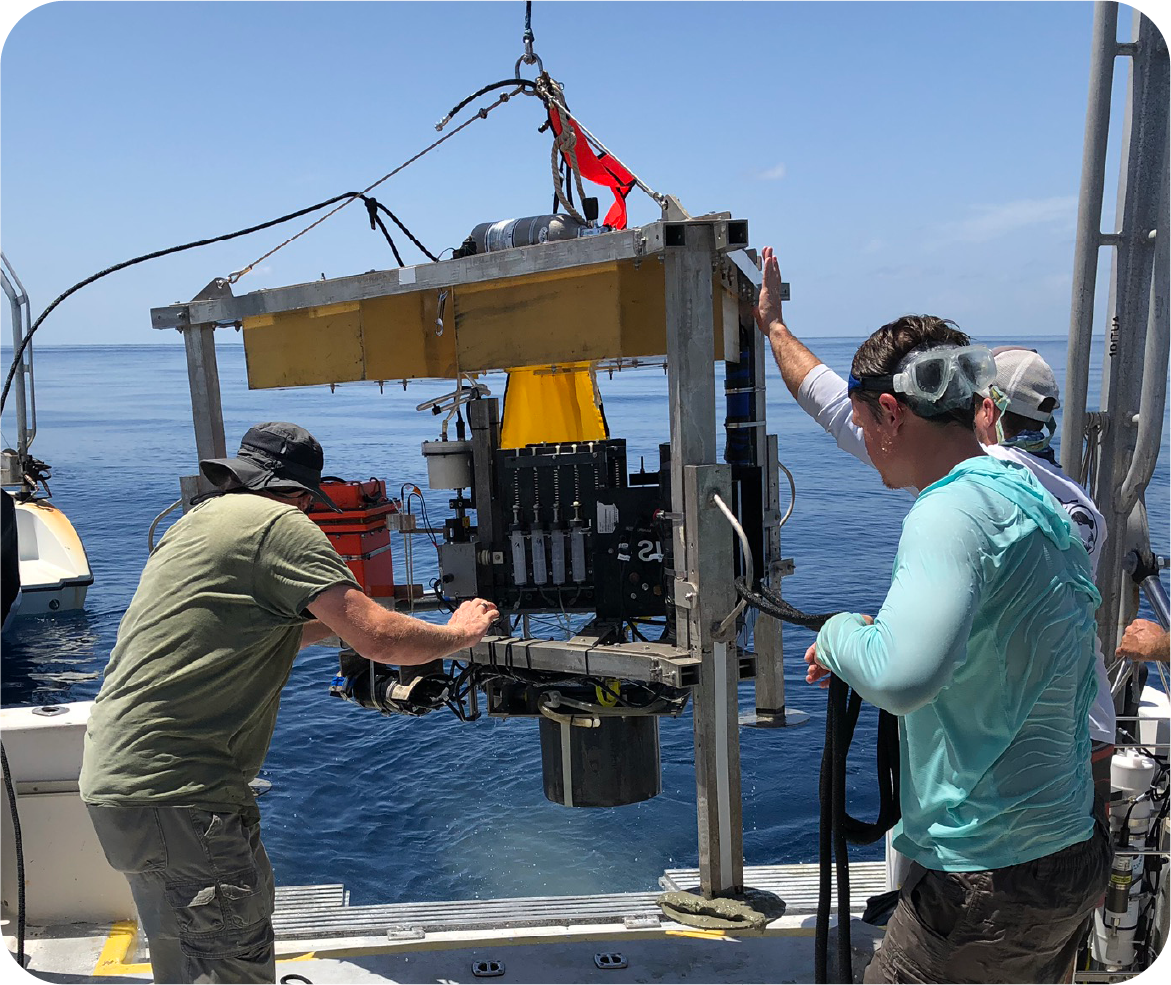Off the coast of southwestern Florida, scientists from FAU’s Harbor Branch Oceanographic Institute explore mysterious deep, dark holes that extend into the seafloor almost three times deeper than the overlying water column. Called blue holes, these underwater sinkholes could help reveal what the ocean might look like under future conditions, said Jordon Beckler, Ph.D., an assistant research professor at Harbor Branch, and also a fellow at FAU’s Institute for Sensing and Embedded Network Systems Engineering.
The two blue holes of interest, called Amberjack and Green Banana, display unique chemistries, including a lack of oxygen and enrichment in hydrogen sulfide and acidity — conditions expected to become more common with a gradual increase in the overall temperature of the Earth’s atmosphere. “As scientists, we have a natural lab like few other known places on the planet, and certainly the eastern half of North America, to study what our future oceans might look like due to changing environmental conditions,” Beckler said.
To reach these inaccessible sinkholes, the team is using state-of-the-art technologies, such as autonomous benthic landers, or underwater observational platforms, to more learn more about nutrients coming from the sediments, as well as the hydrodynamics and biology of the sinkholes.
Most recently, Beckler and his team discovered that the Green Banana is probably connected to mainland Florida through the groundwater, a discovery with potentially huge implications, Beckler said. “If we make changes on land that could affect the aquifer, via drinking water, that could affect the blue hole ecosystem — an ecological hotspot — as well as the greater Gulf of Mexico, an area prone to algae blooms and hypoxia.”


Photography by Geochemistry and Geochemical Sensing Lab
